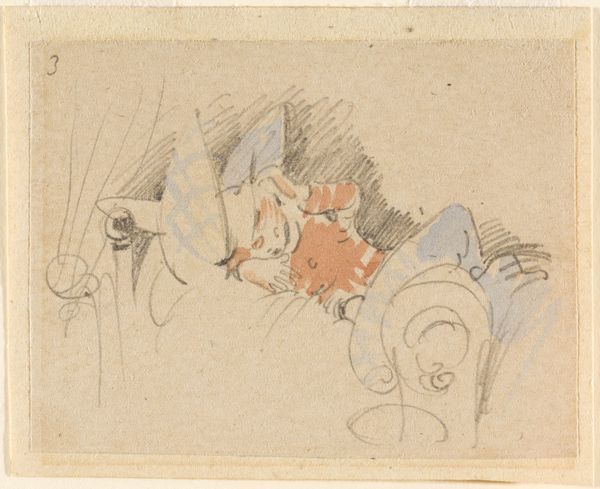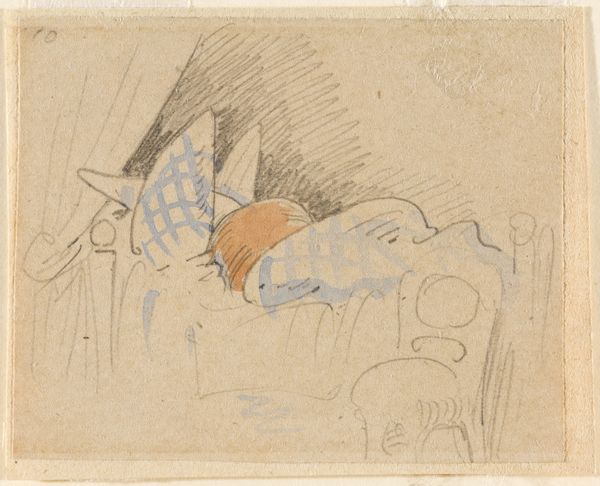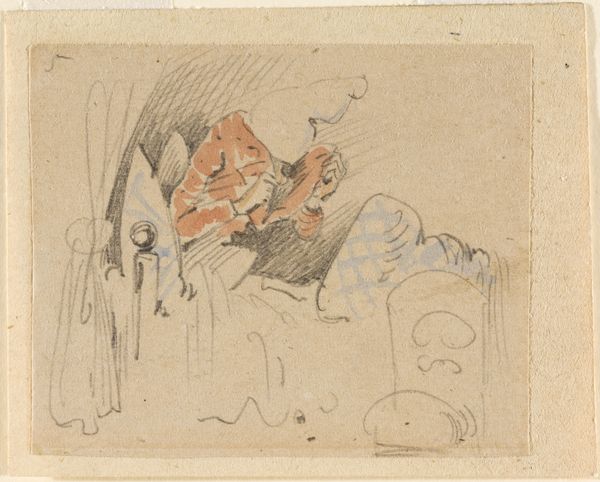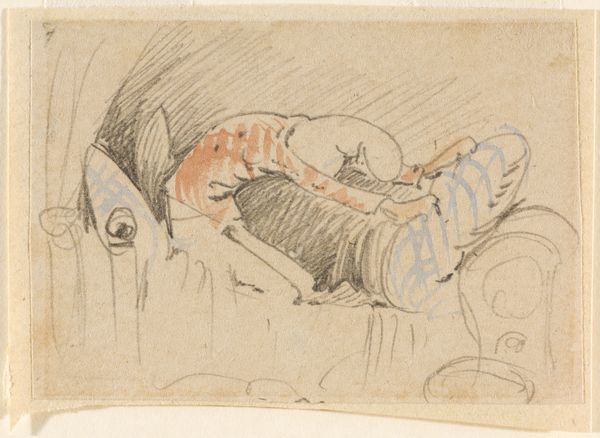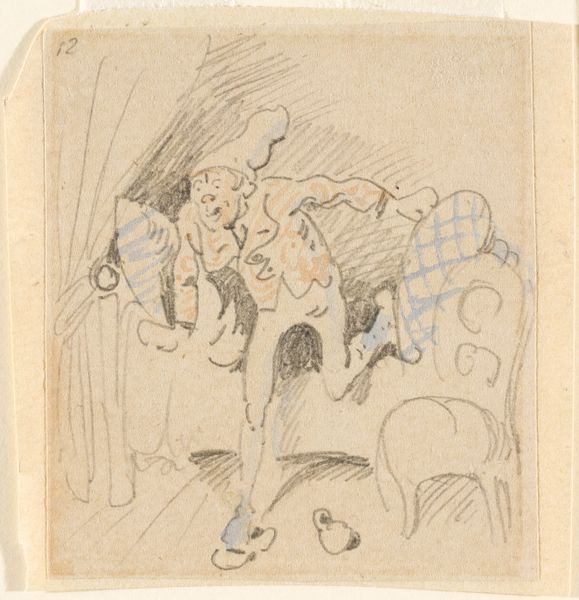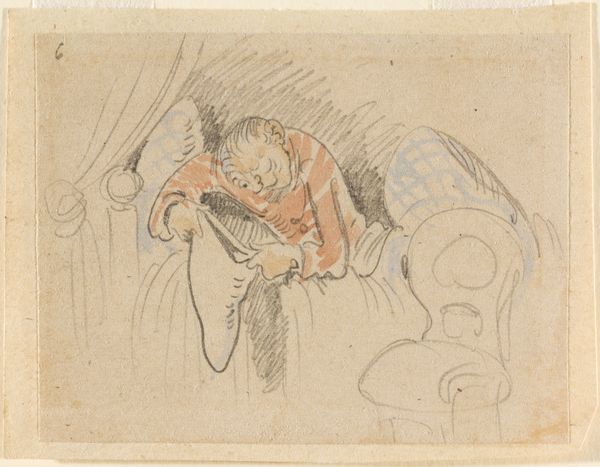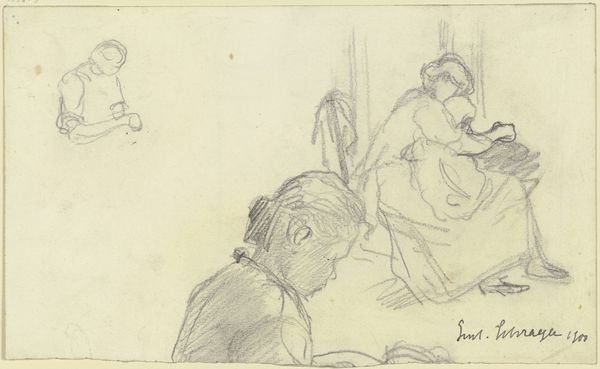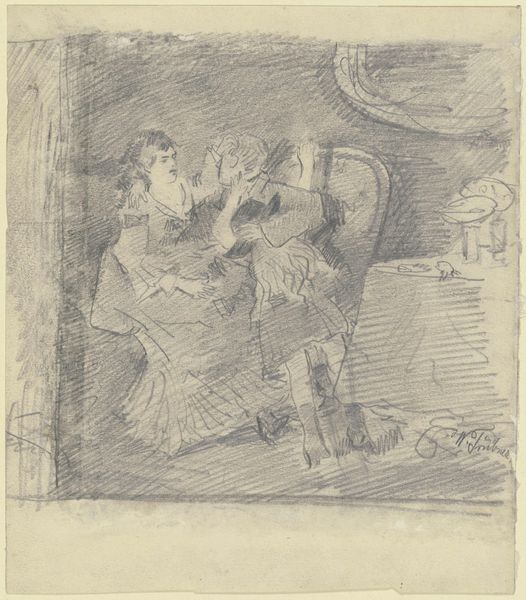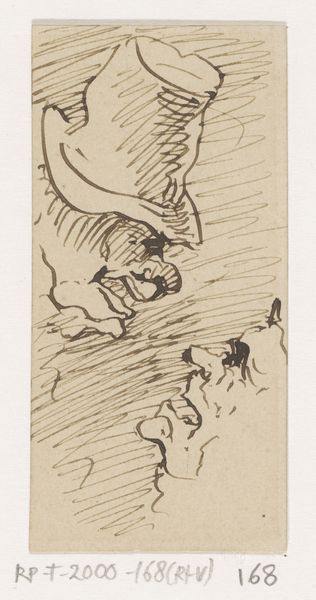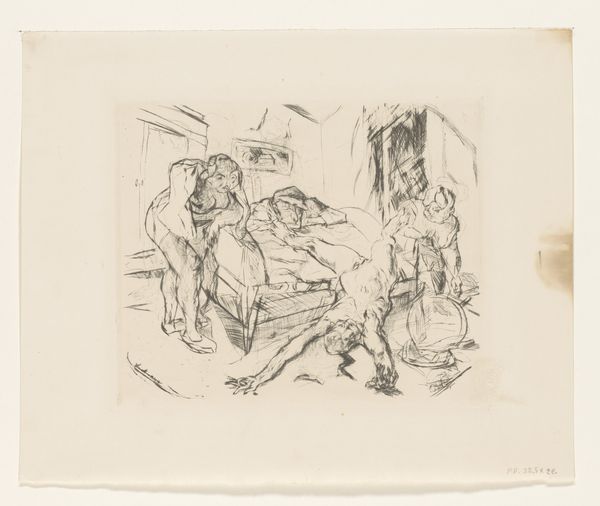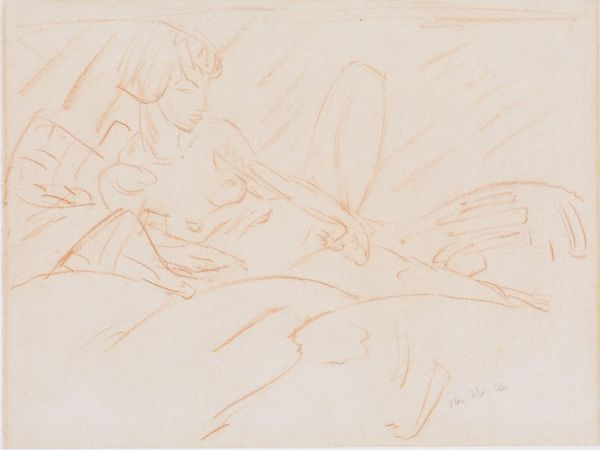
Die gestörte, aber glücklich wieder errungene Nachtruhe (Der Floh); 9 1862
0:00
0:00
Copyright: Public Domain
Wilhelm Busch made this drawing, "Die gestörte, aber glücklich wieder errungene Nachtruhe (Der Floh)," meaning "The disturbed but happily regained night's rest (The Flea)," with pen and ink over pencil in Germany. The drawing depicts a man asleep in an ornate bed, rudely awakened by a flea. Busch was a popular humorist, but beneath the surface of his comic strips one finds social commentary on the petty bourgeois culture of the German Empire. Busch's satirical works often critique the social norms and institutions of his time, and his pointed humor made him a favorite of intellectuals like Sigmund Freud. To appreciate Busch fully, it's important to understand the cultural context of 19th-century Germany: its class structure, its religious traditions, and its evolving political landscape. This piece can be better understood by consulting periodicals from the time, and biographical information about the artist. These resources can tell us something about the way art serves as a mirror, reflecting and commenting on the society that produces it.
Comments
No comments
Be the first to comment and join the conversation on the ultimate creative platform.
